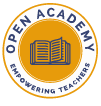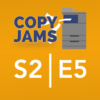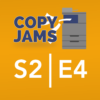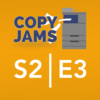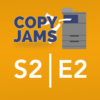Instructional models are the ways teachers and instructors present information to students and allow them to engage in lessons. There are a variety of models teachers can use for students to interact with content and gain skills. Each instructional model allows teachers to present information and students to engage with content in different ways. Each classroom and each lesson will require a different type of instructional model. Teachers must have a strong understanding of the multiple models in order to use them effectively in the classroom. Some of the most used instructional methods and models are direct instruction, an informal presentation, structured discovery, and interactive instruction.
One of the most used instructional methods for classroom teachers is the direct instruction model. Within this model, teachers are explaining to the students exactly what to do and how to do it (Nelson & Price, 2013). This model is very popular and is seen in many curriculum programs. Sometimes this model is also known as the I do, We do, You do model where the teacher is first teaching the content or showing the skill (Nelson & Price, 2013). Students are then guided through the process with help from the teacher. Finally, students are expected to use the skills they have gained to follow the steps in order to arrive at the same outcome as shown by the teacher. Students are expected to be engaged in the lesson by answering questions (Nelson & Price, 2013). This type of instruction is geared towards skills and steps that need to be followed in a very linear way (Nelson & Price, 2013). In this model, the teacher tells the students the information they need to know (Nelson & Price, 2013). Students can then just follow the steps to complete the task and meet the objective.
Teachers who teach more content-specific courses, often use the informal presentation instructional method. In this model “the teachers tell the students what they are going to be told, then tells them, and finally tells them what they were told” (Nelson & Price, 2013). Teachers who teach using this method are often teaching “declarative information” (Nelson & Price, 2013). Teachers will have to create ways to keep students engaged in the delivery of the information. Students in the class can use graphic organizers and other note catchers to gather the information the teacher provides during the lesson (Nelson & Price, 2013). Teachers who choose to use this method of instruction may use electronic media to help convey the content students need to learn. Teachers have to be very comfortable with the content they are teaching and they must be able to present the information clearly to students (Nelson & Price, 2013).
Structured discovery is an instructional method more aligned toward the direct instruction model (Nelson & Price, 2013). Here students have the opportunity to learn by doing. Students are expected to do more of the cognitive lift while teachers serve more as facilitators of thinking. Teachers are there to help students synthesize and evaluate the information they are gathering. According to Nelson and Price (2013), “Students are led to the specific objective in a convergent rather than divergent manner. Structured discovery uses an inductive rather deductive approach to learning”. In this instructional model, the teacher may show the students examples and non-examples while helping students to define a concept (Nelson & Price, 2013). Here you may see students working to create their own definition for concepts like shapes. You may have students using the background information they have gained to answer a new question. Students are then asked questions by the teacher to help move their thinking forward. The teacher has to ensure the students have the skills necessary to unlock the meaning and succeed at meeting the objective. Nelson and Price (2013) conclude structured discovery helps students retain information when they have the chance to interact and engage in the discovery process.
Interactive instruction is a student-focused learning model where the sharing of information is student-led. Here students may share information with each other in the form of plays, skits, posters, or debates. Students are researching content they can share with the rest of the class (Oregon State, 2009). The model relies on students being able to engage with their peers to strengthen their knowledge by becoming an expert on a certain topic (Oregon State, 2009). The interaction between the students is extremely motivating for the students and keeps their interest in the learning activity. Teachers can still have clear objectives for this learning model, however, they will have to release control to allow the students to engage in the learning process by sharing the bulk of the knowledge and information (Oregon, 2009). The teacher should be knowledgeable about all of the topic areas to ensure students are getting and sharing the right information.
To compare and contrast the learning models, it would be wise to first think about the goal of the lesson. Is a teacher teaching some sort of content, or is the teacher teaching a skill? Direct instruction is the best for a teacher to teach students about a particular skill. The linear steps students need to follow makes it easier to ensure the students are able to replicate the skills at a later point in time. If a teacher is going to be sharing some content with students or if the content is the objective of the lesson or the unit, informal presentation, structured discovery, and interactive instruction are models to use. It should be noted that direct instruction is the precursor to using any content-specific instructional model. If students don’t understand the linear steps of gathering key details and information from a text or film, then they may be unable to engage in the structured discovery or interactive instruction models. Structured discovery and interactive instruction may be great engagement strategies after students have already had exposure to content or have the skills to gather the information independently. Teachers using any of the models have to be very confident in the information or the steps they are presenting to ensure students are gathering the necessary information to be successful at the task.
Each of the four instructional models has been defined and for teachers who are planning lesson there may be an inclination to pick one strategy to use as the basis of all instruction. It would be egregious for a teacher or curriculum developer to assume one type of instructional model is the only way a teacher should present information and engage students. Teachers, regardless of the mandates of the curriculum, should be well versed in these different types of learning models to strengthen their ability to teach content and skills in the classroom. When thinking about instructional models, there is no perfect solution for a teacher to use. A teacher may start a lesson off with an informal presentation on a general topic, provide students with steps to follow in order to find more information, ask students to make presentations that dig deeper into the content to share with their classmates. Students can then be held accountable for the content and the skills they have learned over the course of the lesson or unit. Each instructional model has its benefits and teachers must be willing to utilize the one that is best for their students.
References:
Nelson, K. L., & Price, K. M. (2013). Planning Effective Instruction: Diversity Responsive Methods and Management. Belmont, CA: Wadsworth Publishing .
Oregon State . (2009 ). Interactive Instruction . N.D. : N.D
